After topping up with fuel at Billiluna we headed south down the Canning to find a nice spot for lunch. Chris and I had previously visited this area in 2014 and so I was aware of Lake Stretch, 20km or so south of Billiluna.
Lake Stretch was so Idyllic that there was a temptation to make camp, however it was eventually decided that we should get some distance down the CSR before making camp.


Subsequently we got our first experience of the dreaded corrugations of the Canning Stock Route, and they were terrible. It was our belief that the corrugations improve as we headed further south. Boy were we wrong.
Not only did we experience severe corrugations but the bush in many places over hung the track, extensively scratching our vehicles. Our narrower 70 Series Land Cruisers suffered less than the other folk we came across on the track in the wider 200 Series vehicles.
One of our number, Jack, had intended to use his 200 Series Cruiser for the trip but decided to purchase a 70 Series just 3 weeks prior to our departure. He assured us that had he been in the larger 200 series Cruiser he would have turned around on the first day as it would have reeked havoc with his paintwork.
With some excitement we stopped at our first CSR well, “Well 51”. All the wells on the Canning are spaced at intervals of 1 days droving so are about 20-25 km apart.
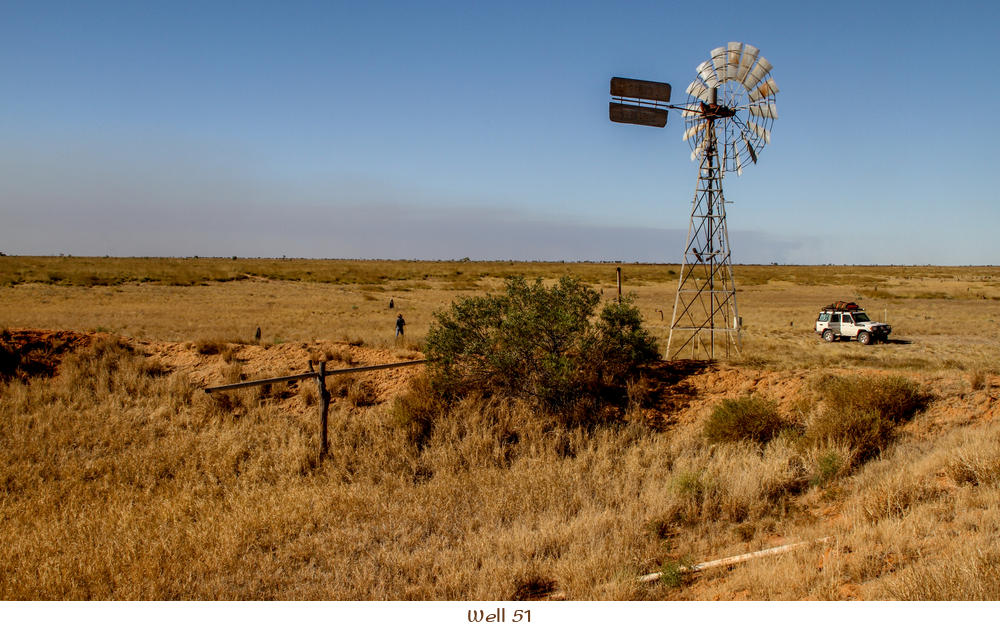
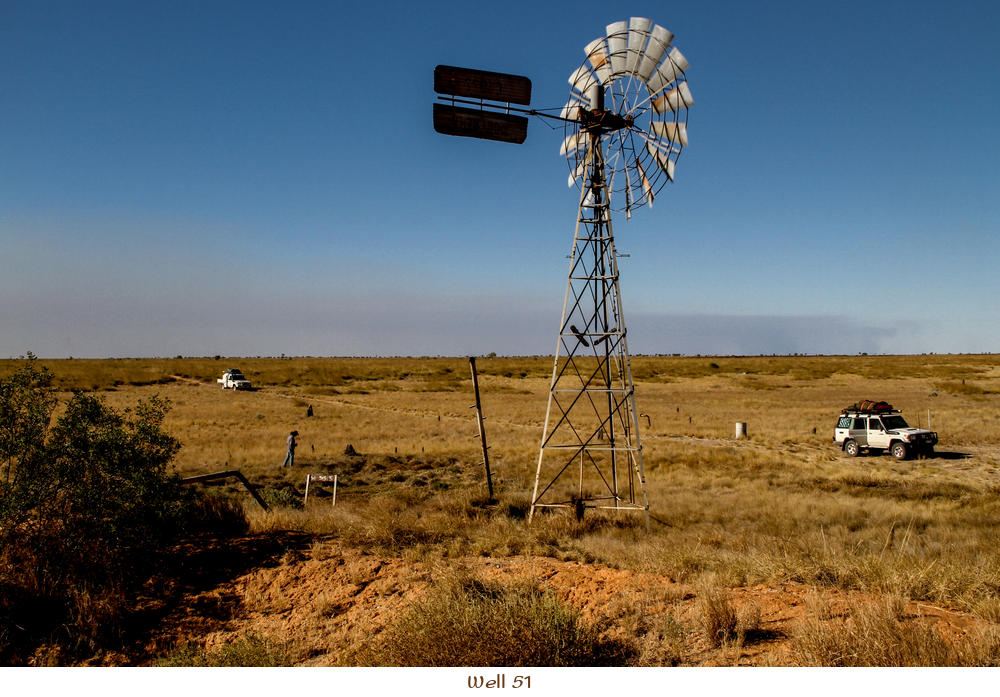
While parked at Well 51 we we had to move our vehicles to allow a large group of Aboriginals (30 or so) in 5 vehicles past. The signage on the side of their vehicles indicated that some were Rangers and others were from a TAFE of some sort. The main ranger wanted to check our permits. Technically you do not need permits to travel the actual stock route but if you want to go off the track by anything more that a few metres then you need permits. Fortunately we all had the relevant permits at hand. We were to find out later in our travels that some people had subsequently been turned around by these same rangers. It’s just easier to get permits so you have no hassles. Not only that, it makes for a much more comfortable situation if you have to visit a community for help.
The Aborigines advised us that they were headed towards Well 49 where they had a truck and equipment bogged. The equipment was apparently to add some facilities to the camping area at Well 46. They soon went on their way. On our maps Well 50 is a designated camping area and as it was getting late we headed for there thinking the the Aboriginal group were heading for well 49. However on arrival at the turn off to Well 50 it was obvious by the tyre marks in the sand that the Aborigines had decided on Well 50 to camp the night. Not knowing how much area was at Well 50, and not wanting to have a “situation” when we wanted to have a beer or two we decided to push on. There seemed that it was hopeless to find a camp spot. Putting swags down on top of Spinifex was not an option. Eventually we came across the spot were the truck and equipment were stuck. The Aborigines had for some reason cleared the scrub with a Bobcat, so without further ado and looking forward to a beer we made camp. Far too late in the day for our liking, and committed ourselves to finding future camps by 3 pm for the rest of the trip.
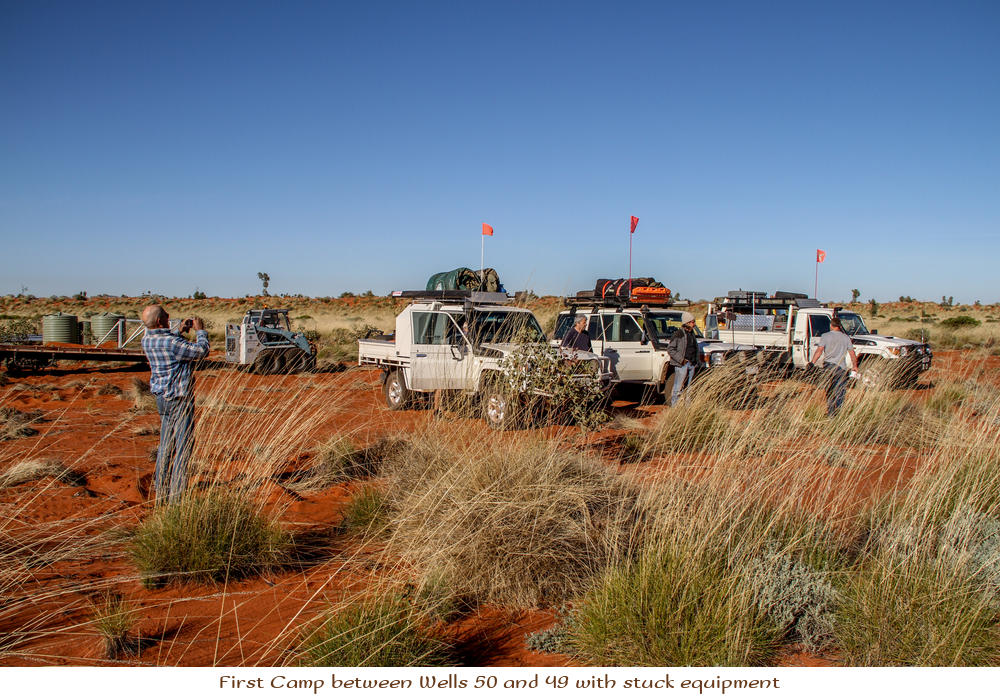
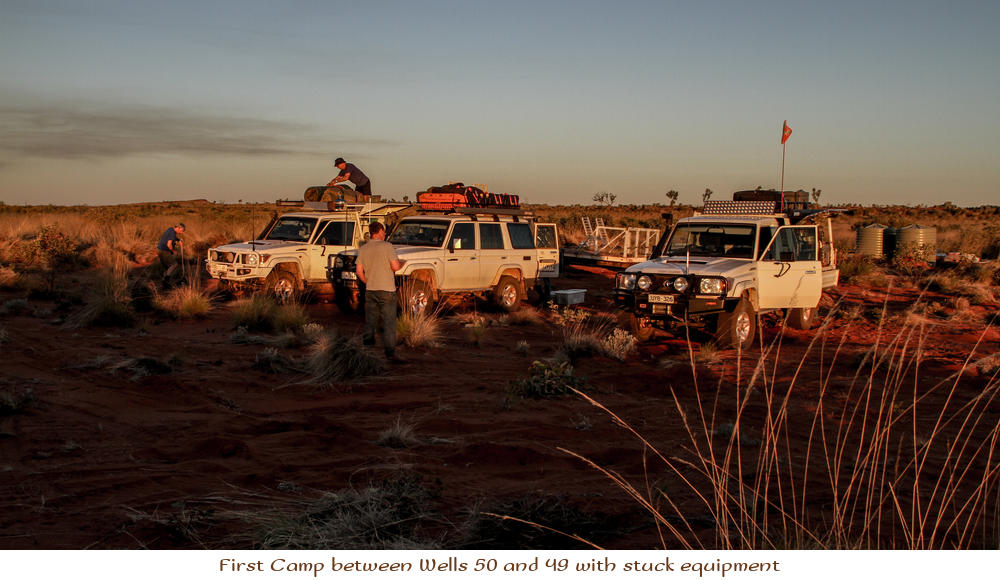
We convinced ourselves that the Aborigines camped at Well 50 would not be along too early in the morning to recover their equipment and un-bog their truck, so were relaxed about having breakfast and breaking camp. Well damn if they didn’t arrive at around 7:30, but they were a very friendly lot and told us to take our time. Luckily we had camped a reasonable distance from their equipment.
So after brekky we wondered what the day would have in store for us. We had not travelled far when we came across a late model Toyota Prado completely burnt out. It appears that the car was an early vehicle on the route this year when the Spinifex would have been tall in the middle of the track. The Spinifex has collected under the vehicle and caught fire. It must have been a very heart rending situation seeing your car and all your possessions going up in smoke in such a remote location. Hopefully they were with others and not sole travellers. The only thing remaining in tact was ironically the fire extinguisher, obviously not up to the task to quell the inferno.



Moving on from the burnt out Prado it was not far to Well 49. We had been advised by the indigenous group that Well 49 was crystal clear water and so were looking forward to a wash (top and tail). Our last shower was in Tilmouth Well 3 nights ago. Fortunately the water in the well was slightly warm, or should I say, not freezing cold. So after a very healthy scrub we headed off.

After our wash at Well 49 we decided to take a detour into a pleasant sounding spot called Breaden Pool. The drive in was very picturesque but the end result a little disappointing. Well it was only about 10km out of our way, the drive was certainly worth it.


The camp ground at Well 46 did not disappoint and lived up to the advice we had received from the indigenous group. It was obvious as to why they had chosen this spot to erect some facilities for travellers. At least our permit money was being put to good use. The well was in working condition but the water was not as clear as Well 49 but OK for washing up etc., and so saving on our on board water reserves.
There were 2 other groups at Well 46. A three vehicle group of Kiwis who were a very chatty lot and a bloke on his own with a “flying machine” in the back of his ute.


Also at Well 46 there was another recent disaster. A late model Nissan Patrol, cab chassis, with a camper unit mounted on the back was in a very sad state. I can only assume that the design of the vehicle was to blame but the fault was obvious. The coil springs and air bags forming a support point while the load was on each end of the chassis. It is possible that the aftermarket addition of the air bags (probably also over inflated) has contributed to the failure of the chassis which on both sides has simply broken in half. The car registration indicated that this disaster also happened this year and the owners have simply abandoned the vehicle. The Canning Stock Route can be very cruel.
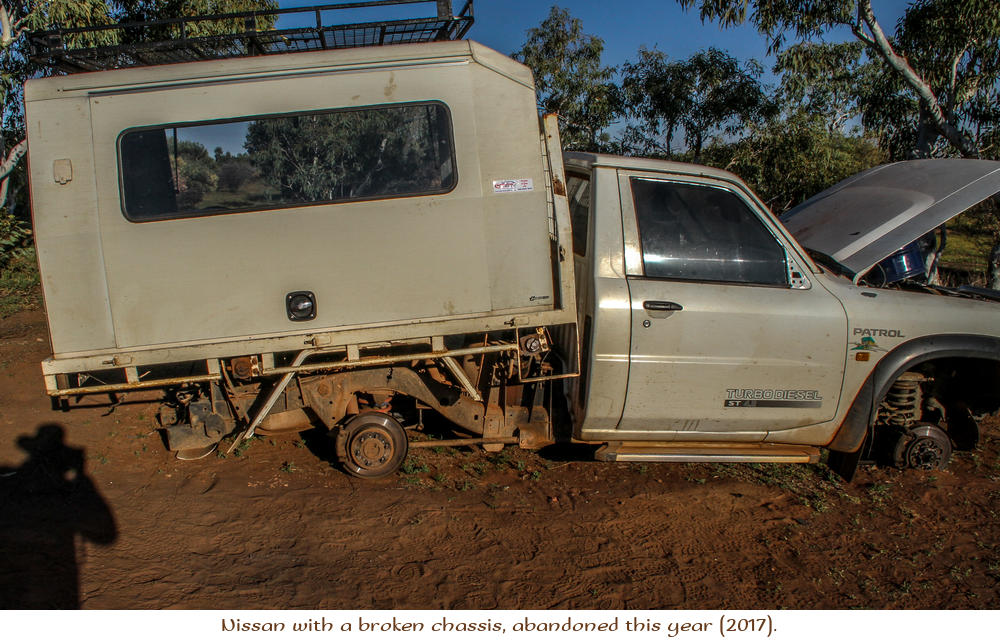

We broke camp the next morning and headed off, not before another chat with the Kiwi’s who were heading North. We then stopped at the site of Well 45 for a break
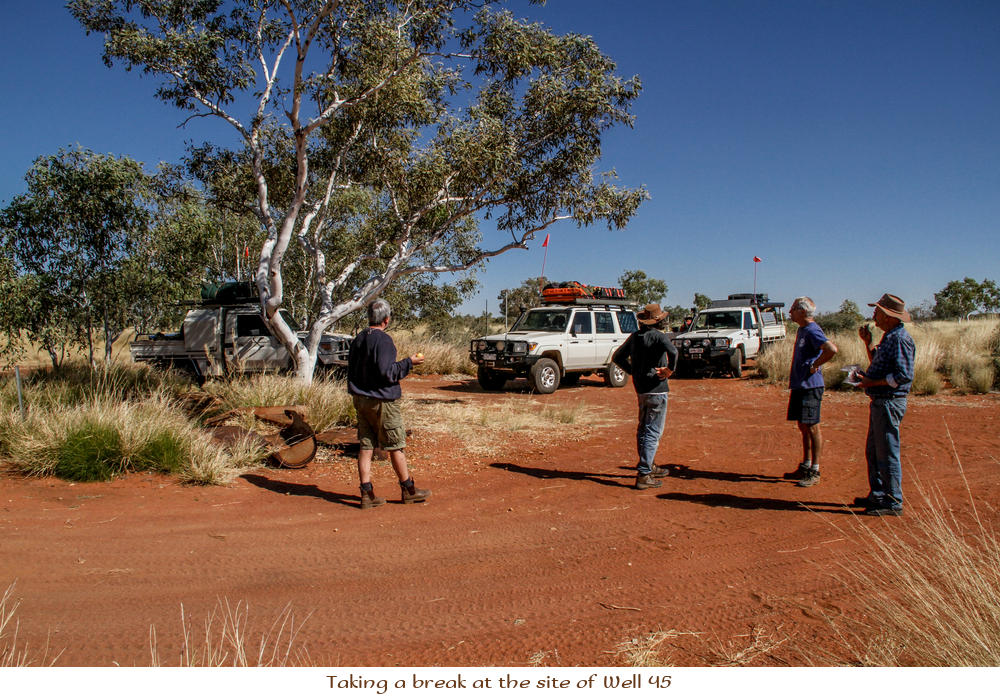
Pushing on from Well 45 we rossed sand ridge after sand ridge. At least climbing the sand ridges gave some relief from the incessant corrugations that were on the flats between the ridges. At well 40 we checked out Tobin’s Grave. Tobin was one of Canning’s party who while working alone away from the rest of the team, was attacked by an Aboriginal throwing a spear that grazed his forehead. With blood streaming down his face, he aimed his gun at the man who by this time had reloaded his woomera with another spear. Both men fired at the same time. Canning hearing the shot, came to investigate and found both men dead. Subsequently one of the Percival Lakes was named after Tobin.


After camping just short of Well 38 we then headed for the “Haunted” Well 37. The well was considered to be haunted due to the number of deaths that occurred nearby. There are 2 graves at well 37, one contains the body’s of two drovers by the name of Shoesmith and Thomson and the other of an Aboriginal drover by the name of Chinaman, all of who were killed by desert people. Thomas Cole, the next drover to come down the Canning, found the bodies and buried them.

Once we had passed Well 36 the Sand Ridges gave way to flat ground with the most severe corrugations that we had yet experienced. Bloody hell they were terrible. Averaging a speed of about 18 km/h. There just wasn’t a comfortable speed and being very mindful of the damage that the Canning can do to shock absorbers and the like, we proceeded slowly.
The Gallery below probably better than words to get an idea of the country we passed through.
Finally arriving at Well33 we drove the last 8 Km to Kunawaritji. The community has decided to help promote travelling the Canning Stock Route by putting in a fabulous ablution block with fantastic showers, laundry and good clean accommodation very reasonably priced considering where we are.
It was interesting that in the parking area there were 7 Vehicles including ours. Six were Toyotas (70 Series) and 1 was a Mazda BT 50 (Ford Ranger) only 30,000km old. Of the seven vehicles only one was not going anywhere. No gusses! Motor simply stopped never to go again it appears, or at least not while we were there despite the efforts of a couple of mechanics
We all had a much needed shower, refuelled then headed out the 8 Km back to Well 33 to make camp. Over the last couple of nights it was realised that at least 2 of our crew had to head back to Alice along the Gary Junction Road, as the trip at the rate we were going was going to take far too long. One had to catch an international flight. I had a small problem with a broken fuel cooler bracket which could turn into a disaster if not careful so a unanimous decision was made to for all of us to head back as well and do some exploring in the Alice area.
So next post will be Kunawaritji to Alice Springs, Palm Valley, Arltunga and then home.
Gallery from Well 33 our final camp on the Canning Stock Route.




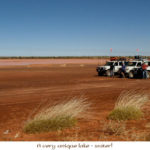
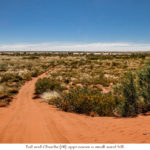
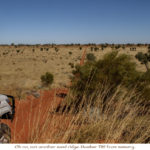
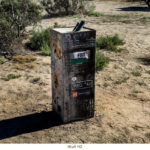
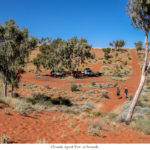
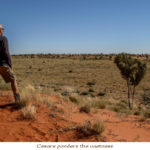
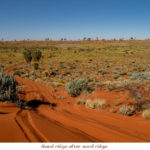
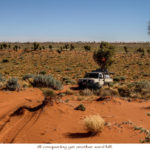
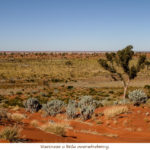
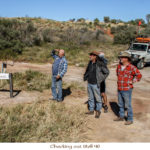
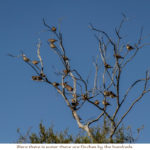
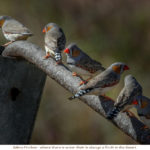
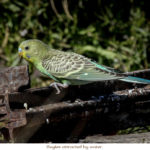
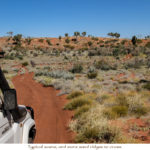
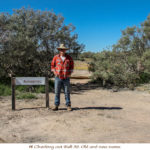
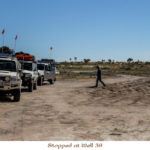
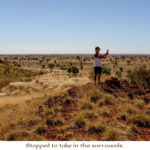
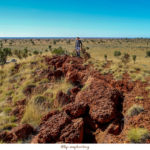
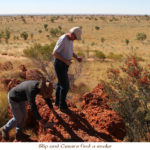
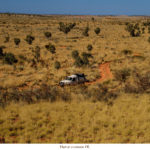
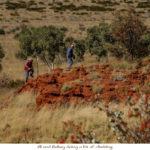
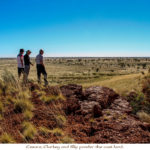
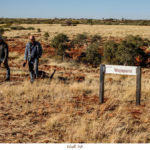
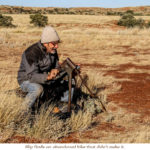
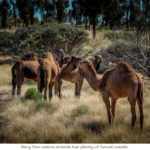
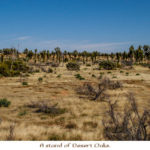
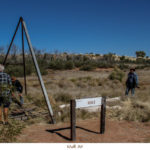
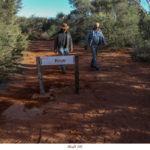
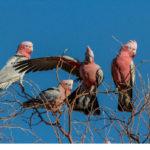

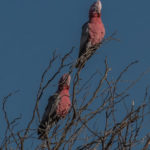
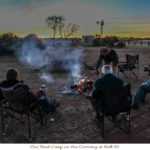
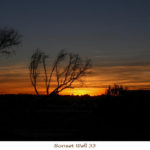
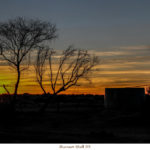
Really interesting stuff as usual, Graham
Best Ted